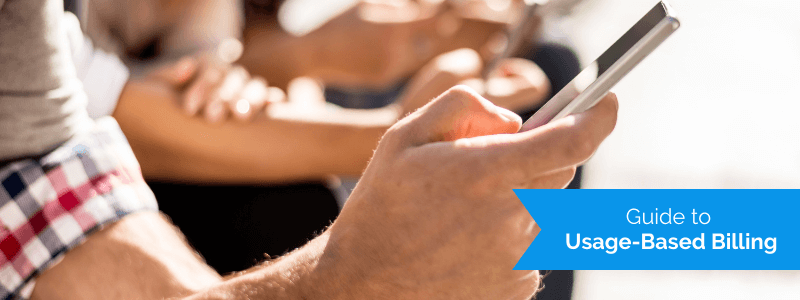Billing methods are always a hot topic for SaaS operators. That’s because the SaaS industry is guided by the goal of making software accessible to everyone without undervaluing their products.
In recent times, a new billing method has gained considerable momentum. An increasing number of experts are starting to see it as a way forward for the entire SaaS industry.
The approach in question is called usage-based billing. This article will give you a primer on what it is, how it can benefit your business, what challenges it poses, and how to implement it successfully.
If you’re a SaaS business operator looking to shake up their billing practices to expand revenue and satisfy your customers, keep reading, because we might just have a solution for you!
Jump to section:
What Is Usage-Based Billing?
Usage-Based Billing Benefits
Challenges of Usage-Based Billing
How to Implement Usage-Based Billing in Your Company
What Is Usage-Based Billing?
Usage-based billing, sometimes called pay-as-you-go, pay-per-use, or metered billing, is a new approach to pricing SaaS products. It’s based on billing the customer for precisely the amount of service or the number of products they’ve used, and not a cent more.
The principle behind the method is quite simple. The service provider measures the customer’s product use and then bills them for that amount.
The application of this billing method to SaaS products is relatively new. However, the method itself has been around for some time.
In fact, usage-based billing is all around us. It’s the method used for calculating your water and electricity bill. Or, to provide a more contemporary example, it’s how you pay for your rides on apps like Uber or Lyft.
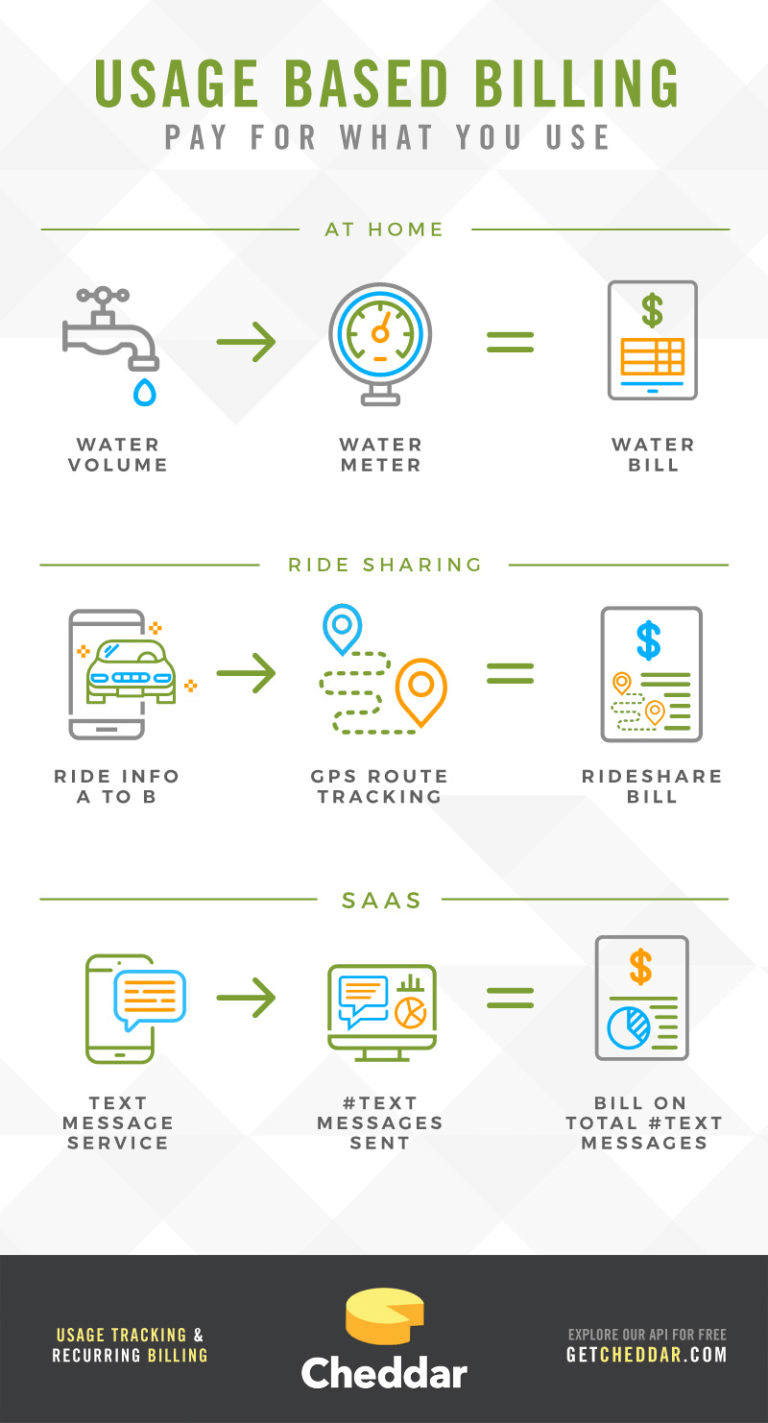
Source: Cheddar
Recently, the usage-based billing model has been applied to SaaS products with a high degree of success. Consequently, more and more companies are moving away from flat-rate subscription billing toward usage-based billing.
There are essentially three types of usage-based billing. The model you choose will depend on the kind of software product you offer to consumers.
The simplest model is called per-unit pricing, and it involves billing the customer according to how many individual software users there are within the customer’s company.
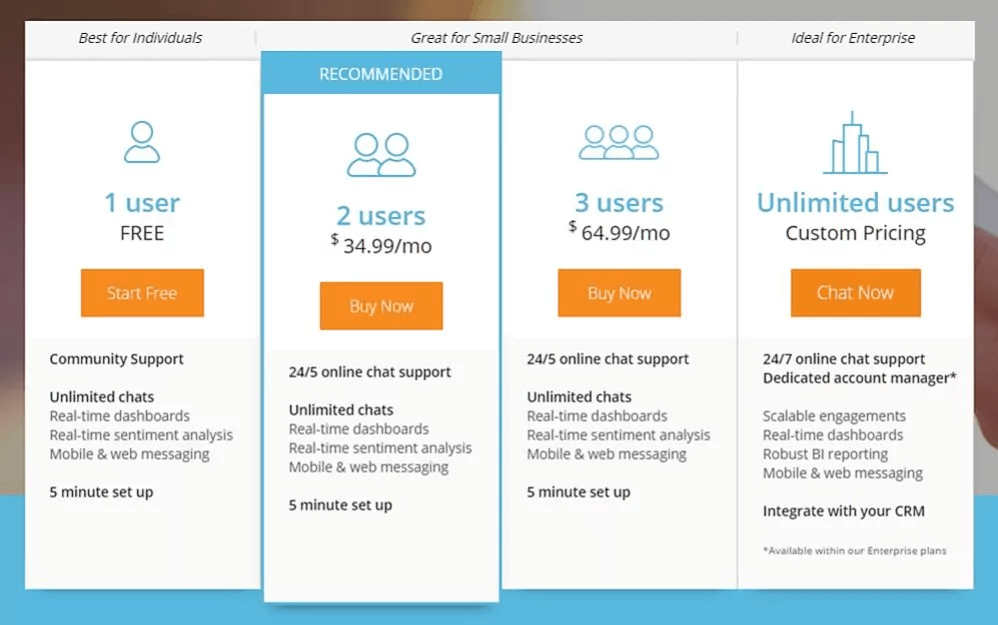
Source: DevTeam.Space
For example, if you charge users $15 per month for your product, and your customer has ten users, you’d bill them $150 per month. If they have a hundred users, you will bill them $1,500. You can also add discounts for a higher number of users to reward your high-value customers.
Volume-based pricing is appropriate when you can measure exactly how much your customers are using your product. For instance, this type of pricing is commonly employed by companies that offer storage space.
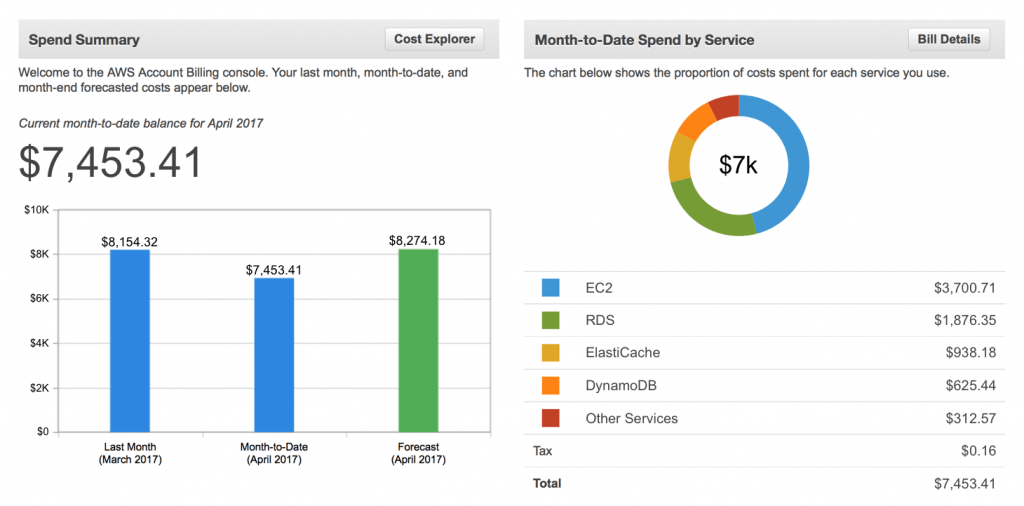
Source: AWS
Amazon’s cloud-computing service, AWS, offers storage at roughly 2 cents per GB. It measures how much GBs a customer uses and then bills them for exactly the amount used.
Similarly, tier-based pricing measures product consumption, but it divides its pricing into several tiers.
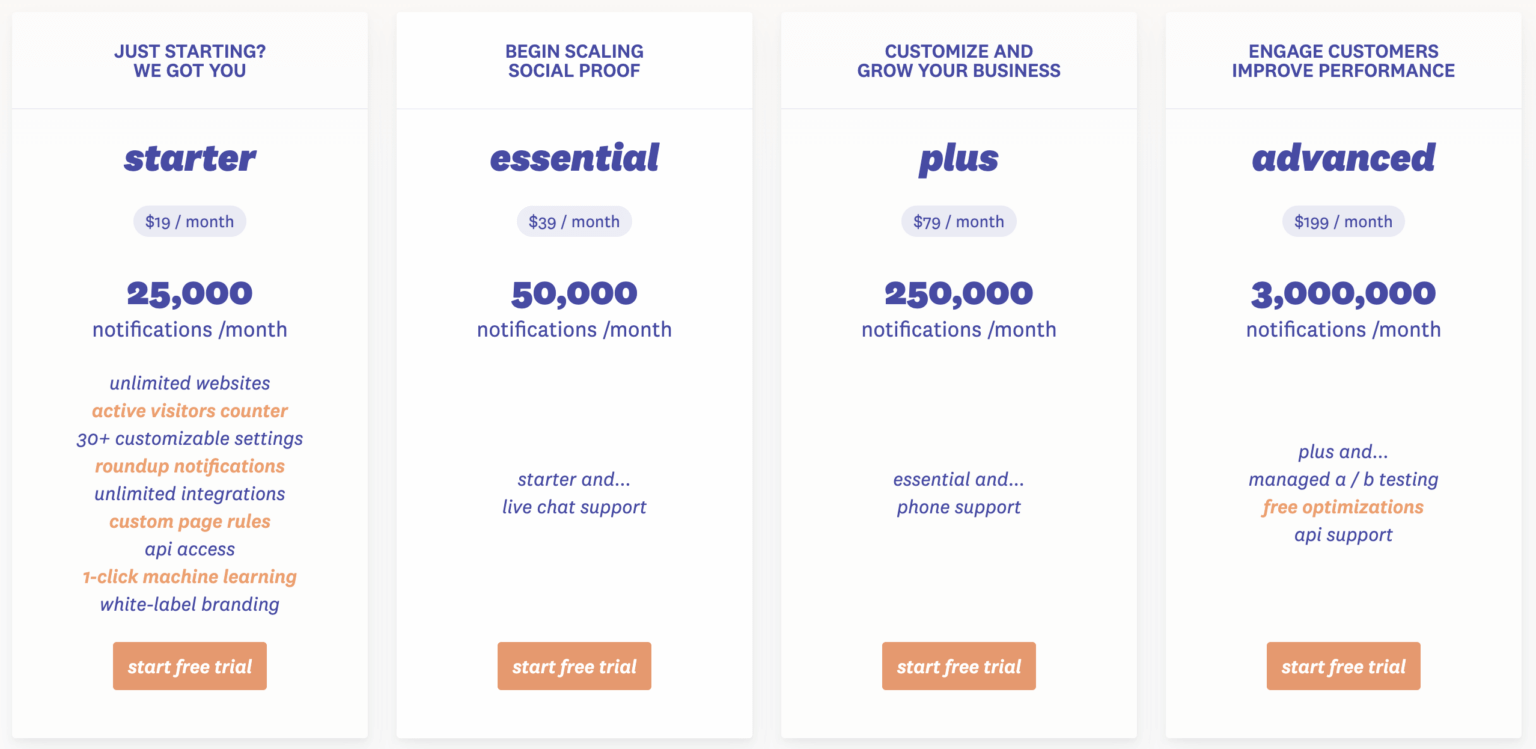
Source: Fomo
For example, FOMO is a service that displays recent orders and product reviews on their customers’ storefronts in the form of pop-up notifications. As you can see above, they don’t charge their service by individual notifications but rather by tiers.
There are many applications to this billing model. If you can already see how this model can be applied to your SaaS product, keep reading to discover the potential benefits you can reap by using it.
Usage-Based Billing Benefits
The reason why usage-based billing is so successfully applied to SaaS businesses is that it benefits both service providers and customers.
Let’s dig a little deeper and enumerate some of the benefits you can get from implementing this pricing strategy into your SaaS company.
1. It Can Make Your Revenue Skyrocket
It’s normal for customers who are satisfied with your product to expand their usage. By implementing the usage-billing model, if the customer starts using your product more, your revenue from that customer will grow proportionately.
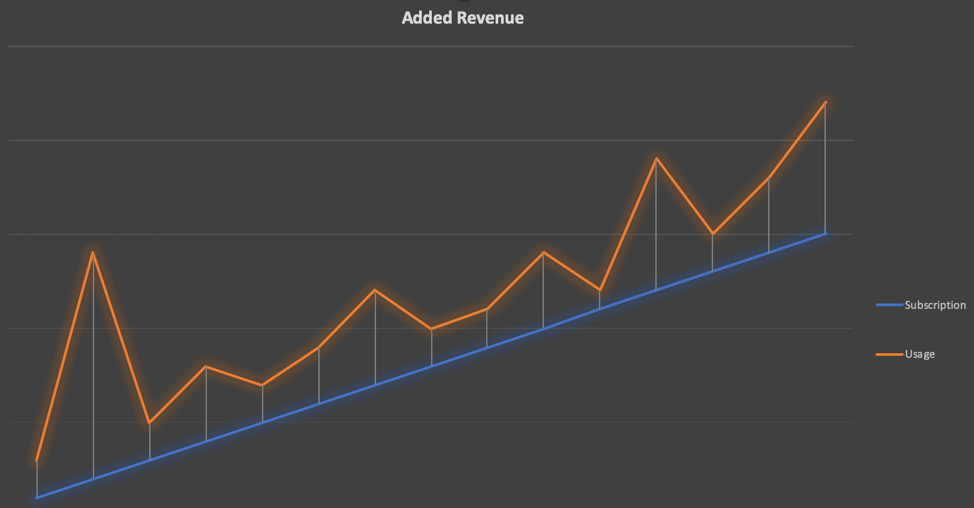
Source: gotransverse
That means your revenue growth becomes more dynamic, and you use every opportunity to maximize it.
Generally speaking, usage-based billing can help your company grow 38% faster.
But some companies have implemented this model exceptionally well.
For example, the communications software company Agora Inc. reported a 128% revenue growth after implementing the model, and the SaaS company Snowflake is growing at the rate of 121% annually thanks to usage-based billing.
2. It’s Customer-Friendly
As your customers pay for exactly what they use, they feel your billing is fair and transparent. From their perspective, they’re getting maximum value at the lowest price.
In addition, you’re attracting new customers who would have passed on your product because the basic price is too high for them. With usage-based billing, they have the opportunity to test drive your software before committing full membership.
Finally, the customer is in complete control of how they use the software. They can increase and decrease their usage over time, instead of having to churn and abandon your software permanently if they decide they can’t afford their current plan.
The medical SaaS product ZocDoc is living proof of this.
They used to charge $3,000 for access to their platform. In 2017, they migrated to usage-based billing and started charging per patient booking. After a while, they saw churn rates drop by 50%!
3. Investors Value It
With such powerful potential to expand revenue, and attract and retain customers, it’s no wonder that investors have already caught wind of usage-based billing as the future of SaaS pricing methodology.
It’s safe to say that investors are also pushing for this model, even in the early stages of SaaS companies.
This is apparent in the 2021 Open View SaaS pricing survey, which has shown that 42% of SaaS companies now use usage-based pricing in their seeding phase, a substantial increase since the same survey was conducted in 2014.
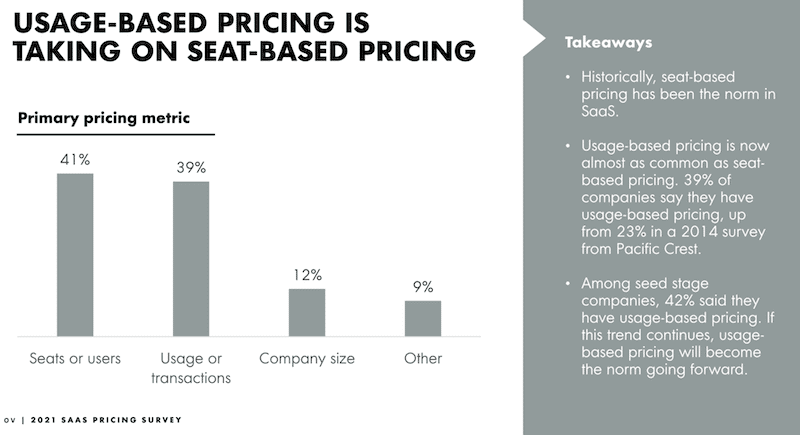
Source: OpenView
So, if you’re looking for investors for your fledgling company, keep in mind they will probably be impressed if you suggest going forward with usage-based billing.
Challenges of Usage-Based Billing
As with any other billing model, implementing and growing with usage-based billing has its own challenges. The pricing model is still relatively new, and there is some uncertainty associated with it.
Let’s see what challenges lie ahead should you choose to implement this billing model.
1. Billing Is Challenging in Itself
Whichever billing model you decide to implement, you’re bound to face some bumps in the road.
Usage-based billing, in particular, can be challenging because it’s a relatively new approach to charging your customers. That means customers aren’t yet entirely used to it, so you might encounter some friction trying to explain the billing process to them.
Generally speaking, billing is the aspect of any business that has the greatest negative impact on user experience.
Billing disputes are a virtually inevitable aspect of SaaS business, so try not to get frustrated. Instead, focus on collecting accurate data about usage, which will help you resolve any disputes that may arise effectively.
2. Deciding How to Measure Usage Can Be Tricky
With subscription-based billing, the usage metric is usually something simple, like “access to software.”
For example, let’s say you operated a video streaming service, like HBO MAX.
Your usage metric is just access to video content. It’s the same for every user, regardless if they watch a movie every once in a while or if they binge TV shows eight hours a day.
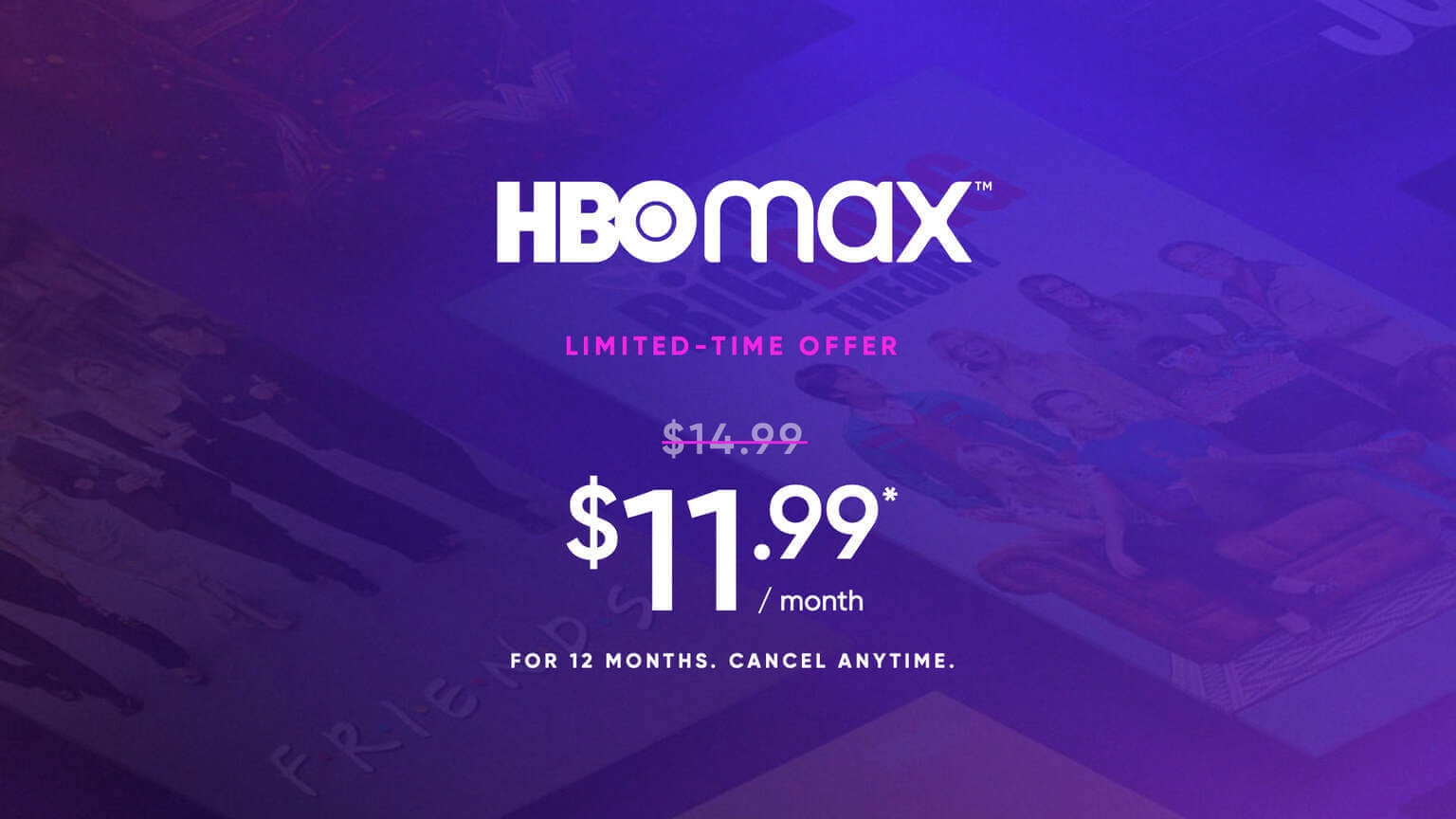
Source: The Streamable
No matter what your needs are, HBO max has a set price for all users.
On the other hand, with usage-based pricing, you need to find a metric that reflects your product perfectly. If you offer storage space, you could use GBs of storage. If you offer email automation, the number of emails sent would be appropriate.
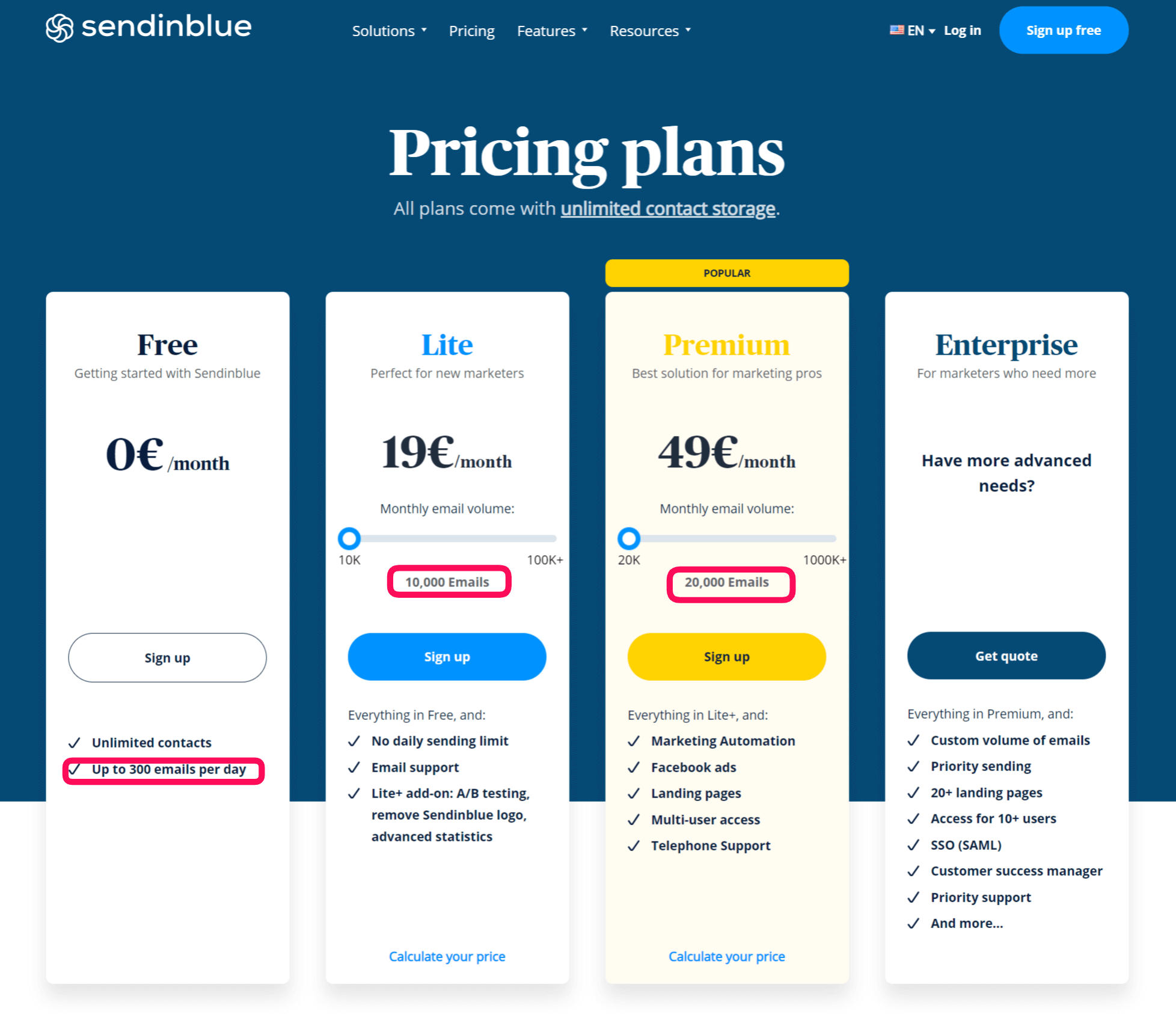
Source: sendinblue
As you can see in the example from Sendinblue, the volume of emails sent determines the price.
Whichever metric you choose to focus on, remember to make it easily measurable and easily understood by the customer.
3. Unpredictability Is a Major Issue
One of the best things about subscription-based billing is that you can predict your overall yearly revenue by keeping track of the monthly recurring revenue (MRR) you get from your users.
Revenue predictability is very useful because it allows you to judge when to make large investments or cut costs. It also gives you a pretty good idea of how many new users you need to add to reach your revenue goals, driving your marketing and sales policies.
On the other hand, with usage-based billing, there is a lot more uncertainty. Monthly revenue may rise and fall arbitrarily, making investments become riskier, and leaving marketing and sales policies without a clear goal to work toward.
Meanwhile, your customers face a similar problem. They need to pay very close attention to how much they’re using your product, so they don’t receive a rude surprise once their monthly bill arrives.
As you can see, usage-based billing can be quite challenging for both service providers and customers. Therefore, you should take extra precautions when implementing this model, and monitor it closely.
If you find that usage-based billing is ill-fitted to the type of product you offer, you can still achieve success using other pricing models.
How to Implement Usage-Based Billing in Your Company
Now that we’ve covered the pros and cons of usage-based billing, you probably have a better idea if this model is appropriate for your business.
If you’re convinced your company would benefit from usage-based pricing, let’s go over the steps you need to take to form a usage-based billing system that will maximize both revenue and customer satisfaction.
1. Determine the Product Usage Metric
Usage metrics are the foundation on which your billing system will be built.
We can distinguish between three types of usage metrics according to how customers are getting value from your software.
The first type of metric is related to users. Your customer gets more value the more end users they can add to your product. This may be most appropriate for CRM, collaboration, communication, and project management software.
The second metric is data. The customer receives more value when they consume or store more data. Think of your telecommunication services provider. The more minutes, gigabytes, or text messages you consume, the higher the price of your plan.
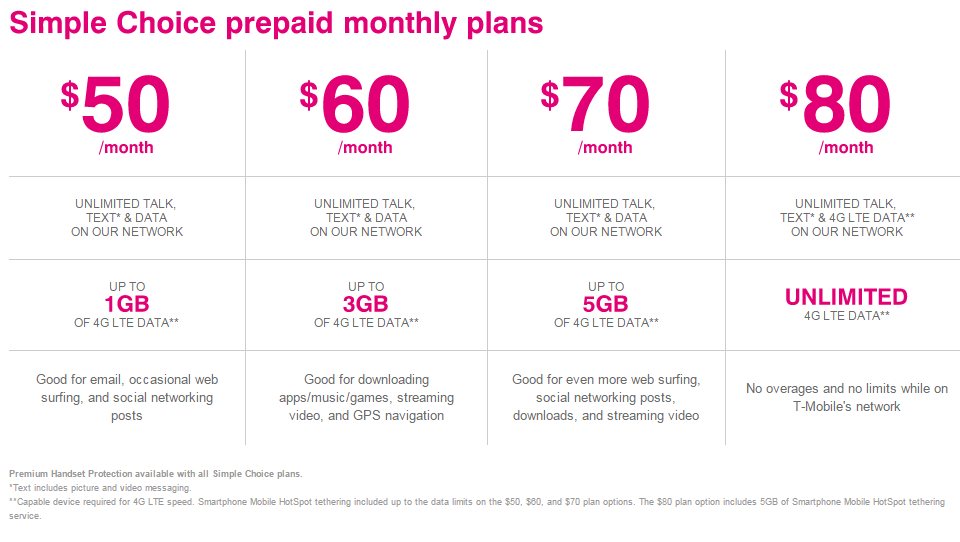
Source: Android Central
Finally, your users might be getting value from your product when they trigger events. For instance, if you’re using marketing automation software, an event that brings you value could be a generated lead.
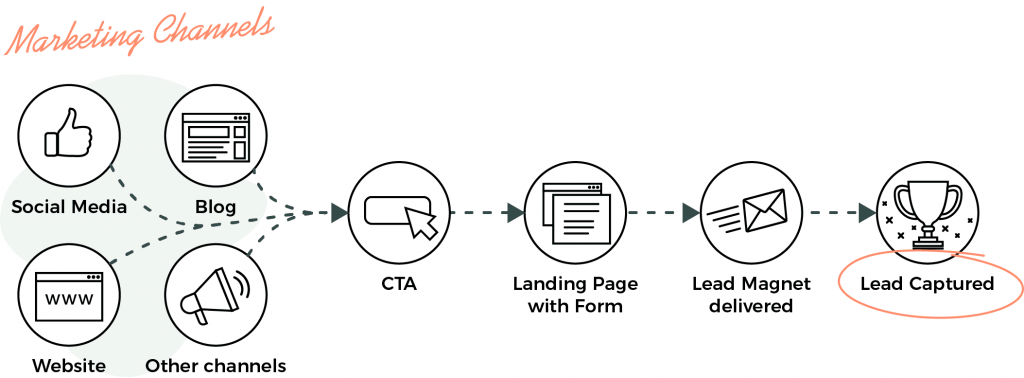
Source: Your Holistic Marketers
So, before you do anything else, think about what aspect of your software brings value to your customer. That’s the usage metric you should focus on.
2. Track Usage
Tracking usage is where things get a little complicated. You will have to collect data accurately and make a clear record of how every customer is using your product.
This is called mediation, and it can be tricky because it involves tracking usage from many users who accomplish different tasks using your product.
There are software products built for mediation purposes to help you collect usage data and sort it into accurate records, like the Billing Platfom’s tool below.
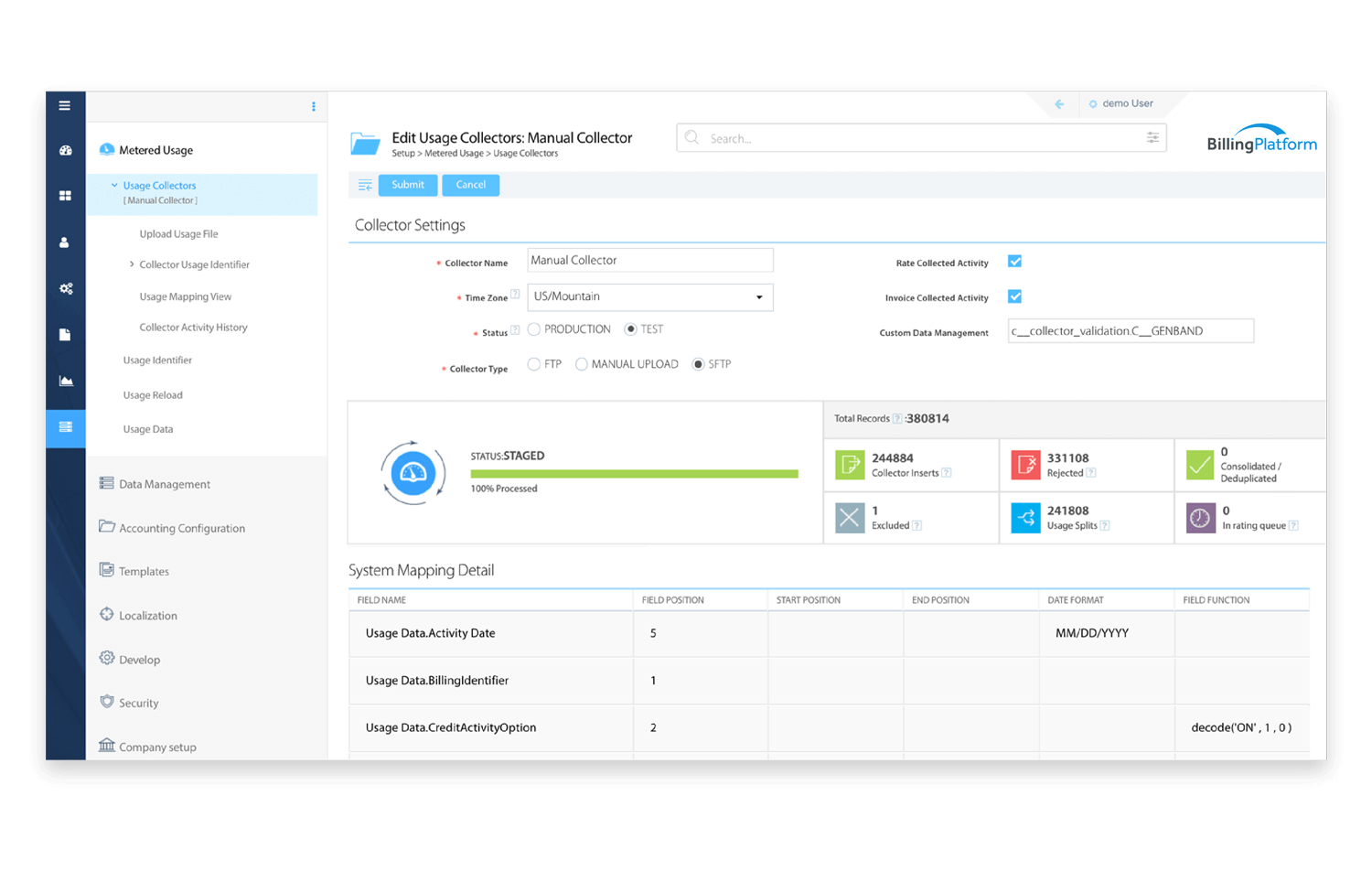
This is an essential step because you need to keep immaculate records of product usage to produce a bill for your customers.
If you don’t devote enough time and effort to this process, you might find yourself unable to form accurate bills for your customers. Worse still, you could face a larger number of billing disputes because you won’t be able to support your demands with proof of usage if a bill is called into question.
3. Report on Usage in Real-Time
To build on that last point, your customers need to have access to information about the way they use your product so they can have a clear idea of what their bill will look like.
To give them that information, you need to track their usage and report it to them in real-time. This allows the customer to decide to decrease their use if they notice their bill running up too much. That way, you’re solving billing disputes even before they occur.
A good practice to adopt here is to offer usage alerts that warn your customer when they’re about to cross a billing threshold they’ve set for themselves.
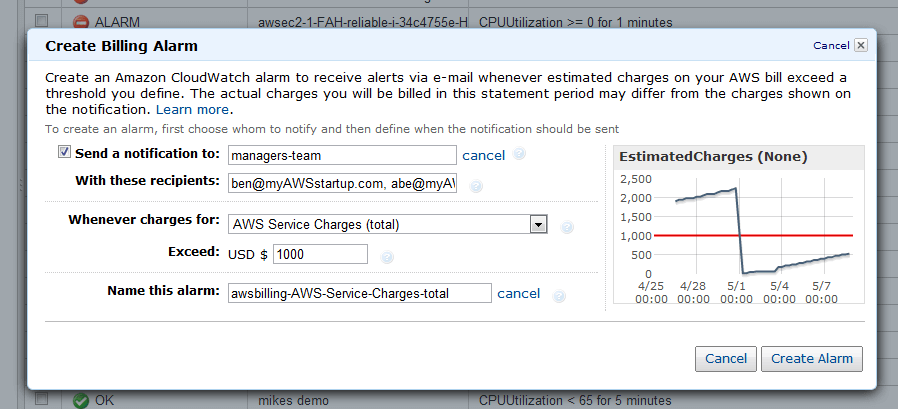
Source: AWS
Have a look at the example above to see how AWS helps customers keep their bills under control.
4. Bill the Customer
Billing the customer is a sensitive touchpoint, so you should approach it with care.
In addition to informing the customer of the amount they have to pay for their product usage, your bill should clearly illustrate what that price refers to. This serves to remind the customer of the value they get from using the product.
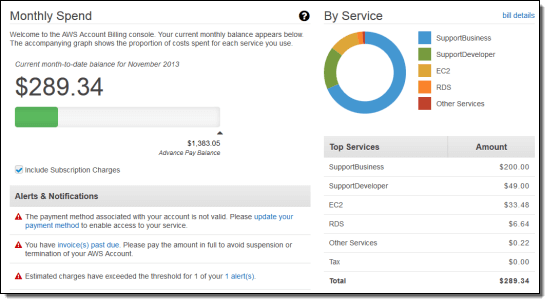
Source: AWS
If you look at AWS Cost from the above bill, you’ll notice that it clearly indicates the amount due, the period that the bill covers, as well as detailed information and a graph depicting services used. It also includes important additional notifications for the customer.
This is an excellent example because the bill itself answers almost every question the customer could have. This makes for a good customer experience and relieves your support team from having to provide additional information or resolve a potential complaint.
A good billing and user management solution like Regpack can take the headache out of payment collection and help you streamline some aspects of your work.
If you take extra care with these four steps, you should have no trouble implementing usage-based billing into your business model. Remember that the best way to avoid disputes and complaints from customers is to provide as much information as possible and make it available to the customer at all times, in real time.
Conclusion
Hopefully, this article has provided you with an informative discussion on the benefits and perils of usage-based billing, an exciting new approach to pricing your SaaS product.
This billing method is more dynamic than subscription-based pricing. It allows both you and your customer to extract maximum value from your relationship, which is why many experts swear by it and see usage-based billing as the future of SaaS pricing.
On the other hand, this method can be somewhat unpredictable and comes with its own risks. That’s why you should implement it with great care and collect usage data meticulously to ensure your customers know where they stand using your service.


